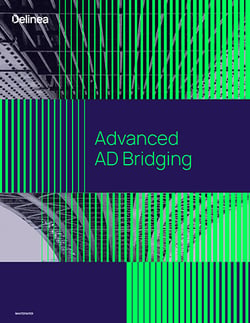
Advanced Active Directory Bridging
Consistently manage administrator access across Windows, Linux, and Unix systems
For years, IT spent massive amounts of time and money administering UNIX and Linux systems, local user accounts and groups, sudoer rights and system configurations in a purely manual fashion. A common pain point was having to manually deprovision an IT admin when he or she left the company. Decentralization made it error-prone and time-consuming to log into each system, locate, and remove or disable their accounts and rights.
AD Bridging helped eliminate the challenges of overlapping identity silos. It allowed non-Windows systems to “join” to AD. AD then saw the computers as part of the Windows domain, allowing them to become AD clients for services such as authentication, authorization, policy management, and directory services.
This white paper is aimed primarily at IT systems administrators and their managers—people close to Active Directory (AD) and its application. You recognize the day-to-day challenges of managing administrator access consistently across Windows, Linux, and UNIX systems, whether on-premises or within a hybrid cloud environment. Their job puts them in the most unique position to appreciate the value of advanced AD Bridging in overcoming such challenges and more importantly, the incremental value it offers beyond basic AD Bridging features.
It assumes an understanding of applications and concepts such as Active Directory, Kerberos, and Privileged Access Management (PAM).
AD Bridging at this basic level of functionality hit all major benefit categories:
- Risk reduction
- Productivity
- Ease of use
- Compliance
- Cost reduction